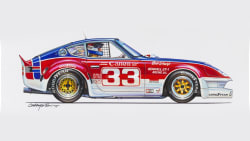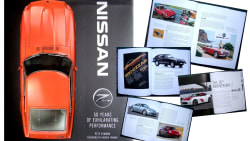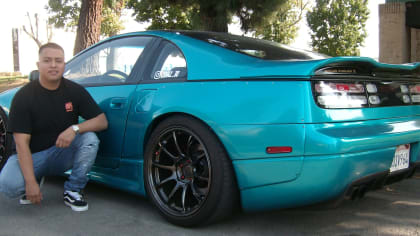How Peter Brock and John Morton Connected With Datsun
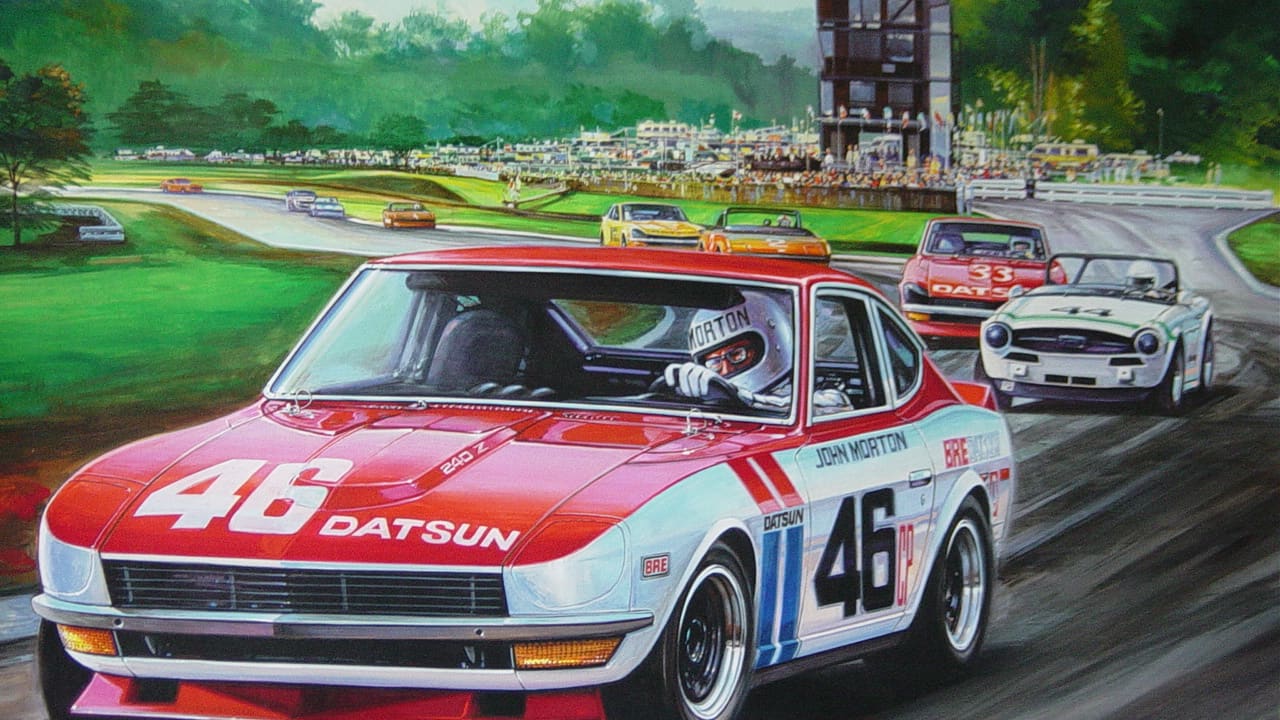
Two racing legends get together... Good things come out of it.
Part 3 of the LACar #ExtravaganZa features the story of how two Datsun racing lore titans joined forces and produced incredible success.
By Hector Cademartori
Sun, Sep 27, 2020 12:00 PM PST
This article is a part of
Nissan Z ExtravaganZa
Click to see the collection and all the included articles!
Peter Brock and John Morton are arguably two of the best-known names in Datsun racing lore. Unlike some other members of Datsun-Nissan teams, they have both remained active after more than 50 years since they started their partnership.
Peter through the more obvious Brock Racing Enterprises (BRE) commemorative functions and his website, along with his connection with the Shelby Cobra World as the designer of the beautiful Daytona coupe, his projects with Superformance, and his work with GM and the original Corvette Stingray before that. And John through his many in-person appearances at vintage and tribute events all across the country.
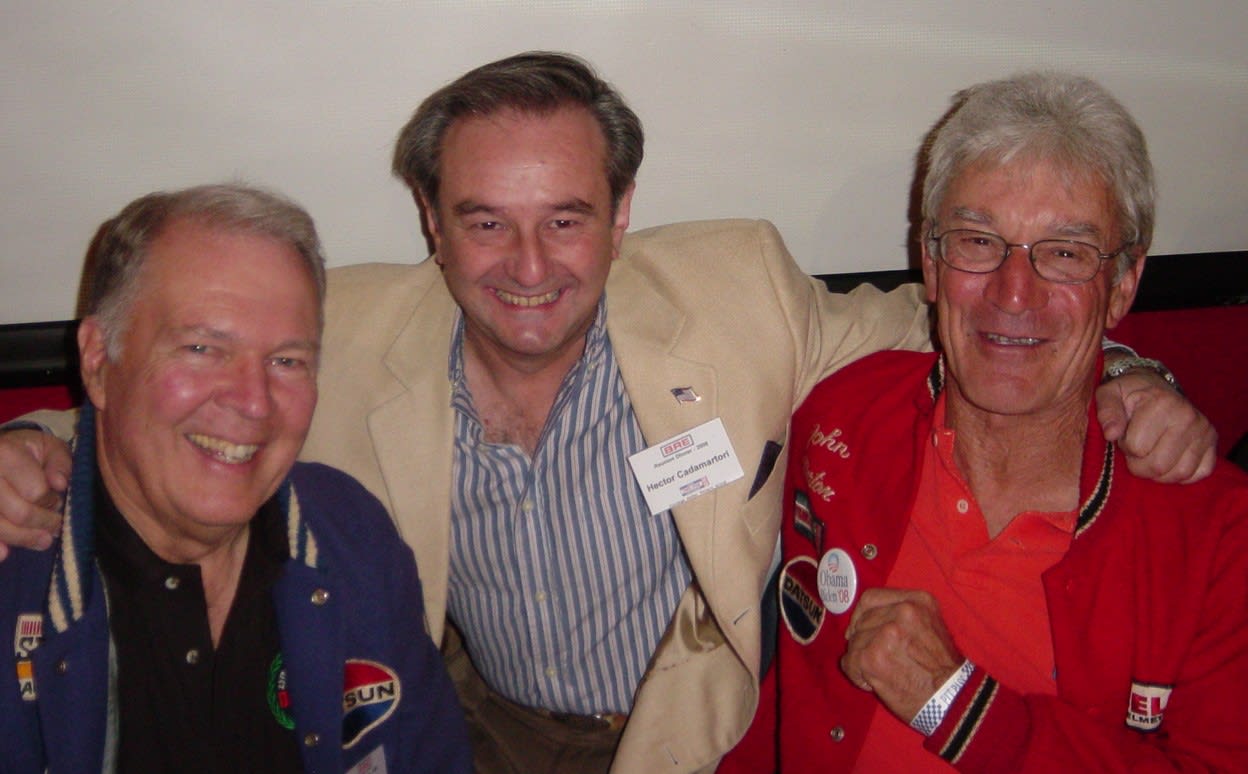
We ran into Brock last year at the Concorso Italiano in Carmel, for the introduction of De Tomaso’s new supercar. Peter did not have a hand in the project and was there as a guest of the factory. He had done design for the marque in the 60s, penning the sleek P70 sportscar (an effort between Alejandro De Tomaso and Carroll Shelby) which, unfortunately, was never produced.
Nowadays, Brock is back in business with the Aerovault project - his new enclosed, and VERY aerodynamic (couldn’t be otherwise coming from Peter) aluminum trailer which he produces in association with his wife and business partner Gayle - in their factory in Henderson, Nevada, just outside of Las Vegas.
After all the publicity of the “Ford vs Ferrari” movie and all the press it generated, I had wondered why Peter Brock was not part of that effort. I found it strange that Ford Racing wouldn’t want a successful designer working with their new team. So I asked Peter directly and he explained:
“I ‘left’ Shelby at the end of the ’64 racing season because Ford management had already made the decision to take over the entire Shelby operation to develop and race their GT40s starting with the ’65 season. The Ford GT40 operation in ’64 had been run (unsuccessfully) by John Wyer’s FAV (Ford Advanced Vehicles) in the UK. The whole Cobra Daytona program was cancelled as it competed directly against the GT40 Fords. Remember that in the entire 1964 season, when the Daytonas and the GT40s were both running against Ferrari, Jaguar and Aston Martin the GT40s didn’t finish one event, while the Daytona were consistently faster and more reliable… in fact winning several of the seasons major races!"
"Hector, you have to understand,” he went on, “that the Ford tech guys were very protective of ‘their’ design. Ford management had millions invested in the purchase of the Lola MK6 from designer Eric Broadley and were convinced of the superiority of that design."
“I have to admit that if I was some uneducated ‘suit’ sitting in an office in Dearborn, with no racing experience, and never attended any races or visited either FAV or Shelby American, and was responsible for making the decision in selecting the ‘best’ of the two designs based on some two page ‘report’ analyzing the two designs, I’d have probably made the same uneducated decision,” Brock told me.
“With Ford having already so much invested in design, existing racing cars, infrastructure, experience and dozens of ‘experienced personnel’ (all with prestigious engineering degrees) there was no way they were going to turn it all over to some ‘uneducated kid’ they’d never met or even talked to,” he went on.
“Besides, our philosophies on aero design were so far apart that they’d never admit they were uneducated or lacked engineering depth. In corporations people are very protective of their positions. They realize no one is indispensable so they fear being replaced or demoted ….just human nature.”
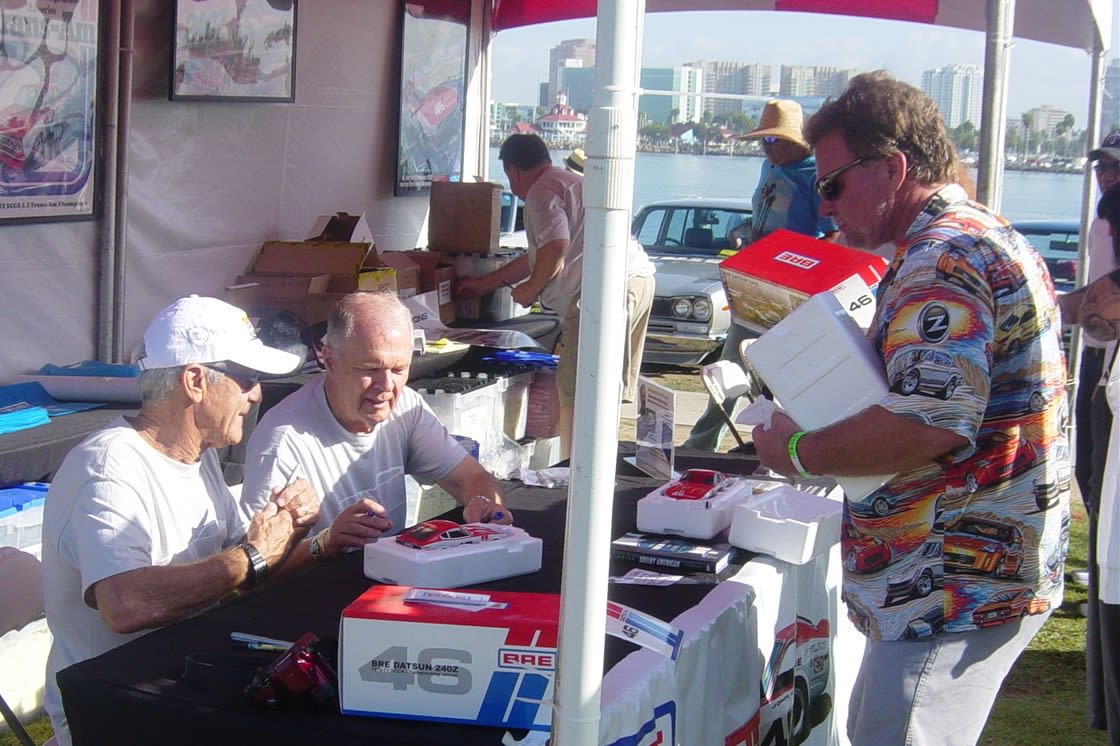
Brock then went into detail, explaining: “The two major factors in the Daytona’s superiority were 1: We’d already had two seasons of racing on the Cobra chassis…..it was proven component and 2: No one in Dearborn had any experience in racecar aerodynamics. By contrast everything on the GT40 design was new and untested, so it was in a constant state of development while trying to be raced and I had the well proven, but essentially ‘unknown’, aerodynamic data that had been developed in the late 1930s in Germany. It was far from perfect, but still far superior to anything on the GT40s."
He then looked me straight in the eye and said: “Had I had even 1/10 of 1% of the budget being spent on the GT40s I could have saved Ford millions by winning the FIA’s GT Championship in 1964. Corporate ego in the form of their investment in the GT40 program was simply lack of due diligence prior to making the decision to award the GT40 program to Shelby.”
Peter left Shelby American at the end on 1964 upon his return from Modena where he was working in the De Tomaso F70 project. In 1966, he started racing a 900 first and then a 1300 cc Japanese Hino Contessa coupe (a Michelotti design supplied by the factory in order to create awareness of the brand in America) producing impressive results and was hired by Hino to design a new race car with the intention of, eventually, enter the day-long race at Le Mans.
The result was the stunning Hino Samurai GT, it was a textbook example of what emerged from the drawing board when Brock poured all his experience into designing winning machines. Built on a LeGrand Mk IV chassis with a Contessa 1.8 liter push-rod four banger with some 120 ponies. A beautiful machine wrapped in an aluminum body made in California and designed to dominate Group A at the upcoming ’67 Japanese Grand Prix.
But there the dream got the black flag. Hino had become a supplier to Toyota who was interested in buying the company and using its capacity to produce only trucks and buses. Toyota flexed its muscles, torpedoed the project and the possibilities for the smaller company to enter the car market. In fact, to this day, Hino is a subsidiary of Toyota producing trucks and buses.
So how did the connection between Peter Brock and Nissan that this article is sub-titled come to be exactly, Mr. Journalist? Patience… we’ll get there.
Based on his racing successes with Hino, Toyota gave BRE the contract to campaign its new beautiful 2000GT DOHC in SCCA and also design a prototype based on this engine. It was 1967 and Brock came back to the US ready to race against Porsches and Triumphs…but the cars didn’t show up. Why? Enter good ‘ol Carroll Shelby.
What follows is a story that’s well known and that I personally heard from Peter himself in at least two Datsun functions and goes basically like this:
Shelby, who had lost his contract with Ford, opened a Toyota dealership in El Segundo and also got the distributorship for the gulf states. Upon learning that Toyota was going SCCA racing, he jumped in a plane and went to Japan. Shelby’s persona, the fact that he was a Toyota dealer and his credentials in competition plus his recent victory at LeMans with Ford, convinced the brass at Toyota’s that HE should handle the company’s racing business in the US.
“Peter Brock? He is the guy who changed tires in my shop” Shelby reportedly replied when someone brought up the fact that there was a signed contract with BRE.
Meanwhile, back in the ‘States, Brock was awaiting the cars until he learned from a friend at Shelby’s that Toyota had shipped the GT2000 to them already. Upon learning that news, he looked around, took a deep breath, and went straight to Nissan USA and offered to put together a racing team using their 2-liter roadsters, but non-racing savvy executives at Nissan didn’t believe they had an acceptable race car platform so they declined.
And then Brock fired his last bullet:”I knew Mr. Miyako at Hino’s from my days racing their cars and called him. He told me. ‘I have a friend - we went to university together- he’s the chairman of Nissan. Let me talk to him’, he told me. A week later he called me back: ‘Nissan Japan will send you the cars and the money’, so we started preparing the cars in secret and without Nissan USA support. The first year, 1969, we won the Pacific Coast Division with Frank Monise and John Morton and proved that we could win with a Datsun” Peter recalled with a hint of pride in his voice.
The Nissan president, Yutaka Katayama, had not been previously told of Brock’s requests but was quite delighted to see Datsuns on the podium. From then on “Mister K” (as his name will always be remembered in Datsun/Nissan racing legend and lore) lent all his support to the program, and forged a personal relationship with Peter Brock that continued on with the successes of the 510 and the 240Z.
And we’re sure you would like to know what happened to Shelby and the GT2000s, right?
Even though the Datsuns did not win all the races, they prevented the Toyotas access to the podiums and, after one season and half a million dollars was burned through, the 2000GTs failed to qualify for the SCCA Runoffs (or American Road race of Champions as it was called back then) at Daytona. Angry and embarrassed, Toyota retired from racing. That simple.
John Morton’s case is much more straightforward: he and Peter met when John was only thinking of becoming a race car driver migrating to California from the Midwest.
From his book “Inside Shelby American”: “Arriving in Riverside I pulled in a small motel called La Casa Contenta. I checked in and then went to the track. As I wandered around a man rode up in a small motorcycle, a Honda 50, and asked why I was there. I told him I had an appointment to attend the Carroll Shelby Driving School the next week. He wore a baseball cap and look as though he might be in the military. ‘I’m going to be your instructor”, he stated. ‘My name is Pete Brock’.” They continued their relationship at Shelby’s where John was first a mechanic and then team driver.
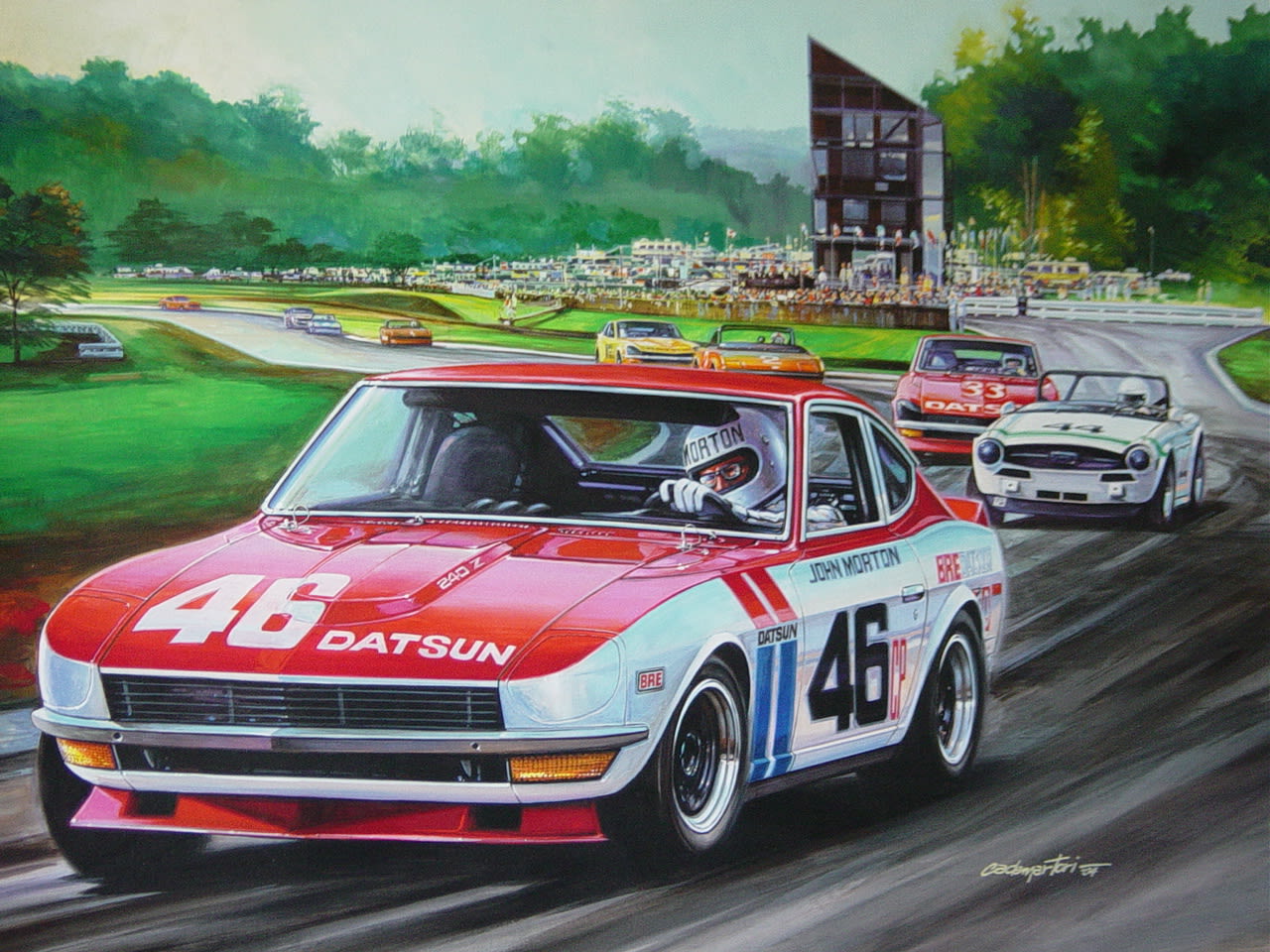
In 1969 he was hired by BRE to drive a second roadster alongside Frank Monise. The man with the white helmet with the name MORTON across the front became the iconic BRE driver winning championships with the roadsters, the 510, the 240Z. Morton stayed in the team until BRE stopped racing Datsuns in 1972. After that, John continued racing professionally, mainly with Nissan teams (including the IMSA GTP ZX-Turbo) but also with Porsche and Jaguar and his long curriculum includes competing in nine editions of the 24 Hrs of Le Mans.
Nowadays, besides his appearances in Datsun-Nissan functions, he remains active driving various types of cars in vintage races, particularly a beautiful replica of his 1971 BRE championship winning 240Z owned by Datsun enthusiast Randy Jaffe. He is also a regular in Champcar endurance races at the wheel of Bruce Mills’ Uncommon Friends Team very fast 240Z.
John’s life is also very present in two great books. One is “The Stainless Steel Carrot”, penned by his long time partner and author, the always-smiling Sylvia Wilkinson. Chronicling his time with BRE and the efforts to win the 2.5 Tran-Am Championship and run the team’s Lotus F5000.
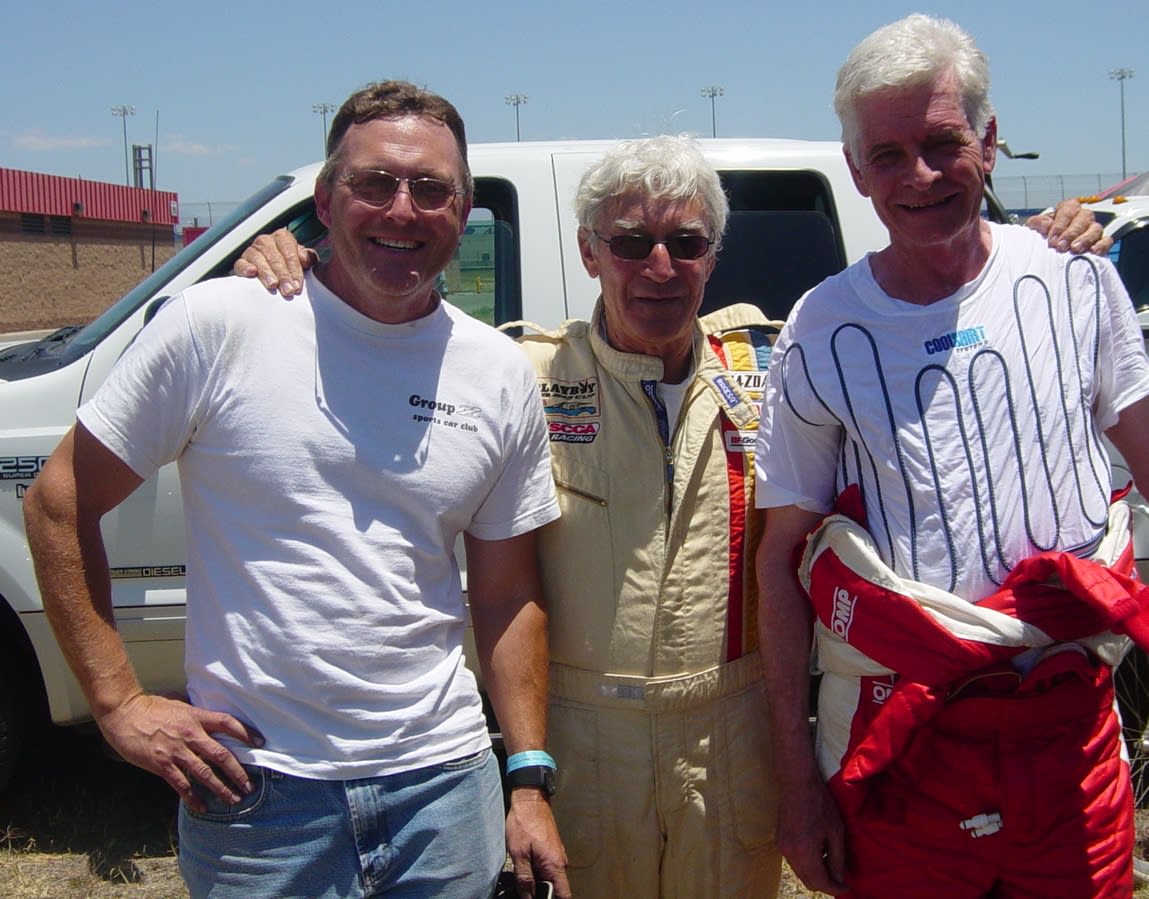
“Inside Shelby American” is the other book (we mentioned it a few ‘graphs earlier), it’s a first-person biographical account of Morton’s formative years as a young man struggling with life and trying to find a way to become a professional racecar driver. His tale about his wrenching and racing with Carroll Shelby in the 1960s. John’s incredible memory for names, places, dates and his funny, frank, self-deprecating style makes for a fully-recommended piece of true-to-life racing-reading.
Afterword (by Doug Stokes): And, so friends and neighbors, there you have it … Tales (pretty much out school) of the wonderfully interwoven lives of Peter Brock, John Morton, Carroll Shelby, “Mr. K”, Frank Monise, the Hino automobile, Alejandro DeTomaso. Eric Broadley, Sylvia Wilkinson, plus a few others, and all the real-life adventures that you just could not make up.
About The Author
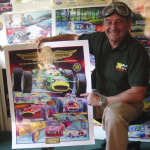
Hector Cademartori honed his racing art in Buenos Aires. In 1983, he left his job with Corsa Magazine in Argentina and moved to Southern California to specialize in motor racing art. Today, you can find Hector’s art on Indianapolis 500 Yearbook covers, Laguna Seca Raceway, Auto Club Speedway and Carrera Panamericana posters, the NHRA, foreign and domestic automobile and motorcycle magazines, motorcycle manufacturers, Toyota Motorsports, TRD and Lucas Oil. Hector races his 1973 Datsun 240Z “Ferratsun” around the So Cal circuits, and a 1991 Volvo 740 Wagon with the 24 Hours of LeMons.
